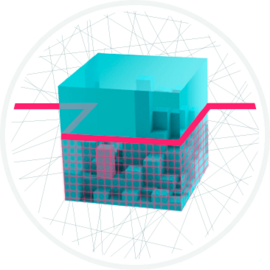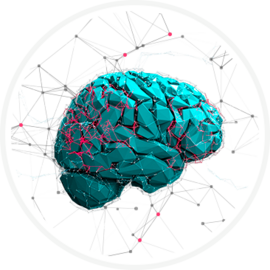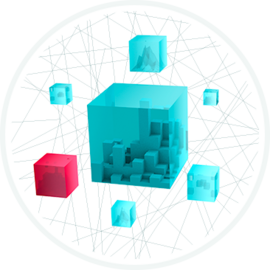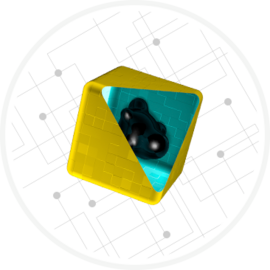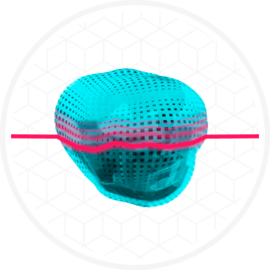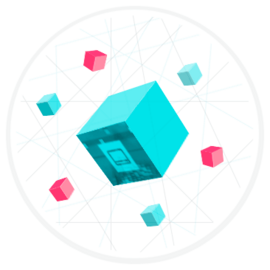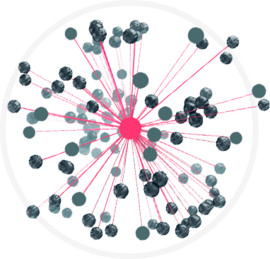Our unique, multilayered approach to security
A single layer of defense is not enough in today’s constantly evolving threat landscape. ESET employs a multitude of proprietary, layered technologies, working together as ESET LiveSense, that goes far beyond the capabilities of basic antivirus. We also use advanced machine learning, which ESET pioneered to combat emerging threats. And we were among the earliest adopters of cloud technology, which powers our ESET LiveGrid® global reputation system to constantly update threat intelligence. Advances like these are the work of ESET’s team of dedicated people, who have been researching malware and innovating technology for more than three decades.
The ESET approach
ESET LiveSense technology, combined with our machine learning expertise, cloud reputation system, and our people, together power the world’s most formidable cyber threat prevention, detection and response platform.
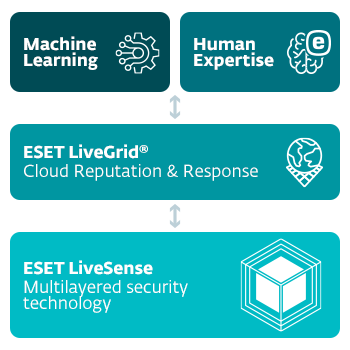
UEFI Scanner
ESET was the first endpoint security provider to add a dedicated layer into its solution that protects the Unified Extensible Firmware Interface (UEFI). ESET UEFI Scanner checks and enforces the security of the pre-boot environment so that it is compliant with the UEFI specification. It is designed to detect malicious components in the firmware and report them to the user.
Show more
UEFI is a standardized specification of the software interface between a device’s operating system and its firmware, replacing Basic Input/Output System (BIOS) used in computers since the mid-1970s. Thanks to its well documented layout, UEFI is easier to analyze and parse thus allowing developers to build extensions for the firmware. However, this opens the door also for malware developers and attackers who can infect the UEFI with their malicious modules.
DNA detections
Detection types range from very specific hashes to ESET DNA detections, which are complex definitions of malicious behavior and malware characteristics.
While malicious code can be easily modified or obfuscated by attackers, the behavior of objects cannot be changed so easily. ESET DNA detections are designed to take advantage of this principle.
Show more
We perform deep analysis of the code and extract “genes” that are responsible for its behavior. We use these to construct ESET DNA detections, which are used to assess potentially suspect code, whether found on the disk or in the running process memory.
DNA detections can identify specific known malware samples, new variants of a known malware family or even previously unseen or unknown malware that contains genes that indicating malicious behavior.
Machine Learning
ESET products utilize two different forms of Advanced Machine Learning – a high-powered detection engine in the cloud and a lightweight version on the endpoint. Both employ a handpicked array of classification algorithms; among others, deep learning and boosted trees, that ensure rapid and accurate analysis necessary to stop emerging threats.
Show more
To offer the best detection rates and the lowest possible false positive rates, Advanced Machine Learning utilizes outputs of both static and dynamic analysis. It is also fine-tuned to coordinate with ESET’s other technologies such as behavioral analysis, DNA detections, sandboxing and advanced memory scanning.
Cloud Malware Protection System
The ESET Cloud Malware Protection System is one of several technologies based on ESET’s LiveGrid® cloud system. Unknown, potentially malicious applications and other possible threats are monitored and submitted to the ESET cloud via the ESET LiveGrid® Feedback System.
Show more
The samples collected are subjected to automatic sandboxing and behavioral analysis, which results in the creation of automated detections if malicious characteristics are confirmed. ESET clients learn about these automated detections via the ESET LiveGrid® Reputation System without the need to wait for the next detection engine update.
Reputation & cache
When inspecting a file or URL, before any scanning takes place, our products check the local cache for known malicious or allowlisted benign objects. This improves scanning performance.
Afterwards, our ESET LiveGrid® Reputation System is queried for the object’s reputation (i.e. whether the object has already been seen elsewhere and classified as malicious). This improves scanning efficiency and enables faster sharing of malware intelligence with our customers.
Show more
Applying URL allowlists and checking reputation prevents users from accessing sites with malicious content and/or phishing sites.
Behavioral Detection and Blocking - HIPS
ESET Host-based Intrusion Prevention System (HIPS) uses a predefined set of rules to look for suspicious activities and to monitor and scan behavioral events such as running processes, files and registry keys. When identified, HIPS reports the offending item and – if further analysis is necessary – requests deeper inspection using other ESET technology layers.
Show more
Deep Behavioral Inspection (DBI) is one of HIPS’ built-in modules that enables deeper and more granular user-mode monitoring of unknown and suspicious processes. DBI was introduced in 2019 and represents an effective antidote for evasion techniques known to be used by threat actors in the wild.
In-Product Sandbox
Today’s malware is often heavily obfuscated and tries to evade detection as much as possible. To see through this and identify the real behavior hidden underneath the surface, we use in-product sandboxing. With the help of this technology, ESET solutions emulate different components of computer hardware and software to execute a suspicious sample in an isolated virtualized environment.
Show more
We use binary translation to keep the in-product sandboxing lightweight and avoid slowing down the machine. We first implemented this technology in our solutions in 1995 and have been improving it ever since.
Advanced Memory Scanner
Advanced Memory Scanner is a unique ESET technology which effectively addresses an important issue of modern malware – heavy use of obfuscation and/or encryption. To tackle these issues, Advanced Memory Scanner monitors the behavior of a suspicious process and scans it once it decloaks in memory.
Show more
Whenever a process makes a system call from a new executable page, Advanced Memory Scanner performs a behavioral code analysis using ESET DNA Detections. Thanks to implementation of smart caching, Advanced Memory Scanner doesn't cause any noticeable deterioration in processing speeds.
Moreover, there is a new trend in advanced malware: some malicious code now operates "in-memory only", without needing persistent components in the file system (in other words fileless malware) that can be detected conventionally. Only memory scanning can successfully discover such malicious attacks and ESET is ready for this new trend with its Advanced Memory Scanner.
Exploit Blocker
While ESET’s scanning engine covers exploits that appear in malformed document files and Network Attack Protection targets the communication level, the Exploit Blocker technology blocks the exploitation process itself.
Show more
Exploit Blocker monitors typically exploitable applications (browsers, document readers, email clients, Flash, Java, and more) and instead of just aiming at particular CVE identifiers it focuses on exploitation techniques. When triggered, the behavior of the process is analyzed and, if it is considered suspicious, the threat may be blocked immediately on the machine.
This technology is regularly updated as new methods of detection are added to cover the latest exploitation techniques.
Ransomware Shield
ESET Ransomware Shield is an additional layer protecting users from ransomware. This technology monitors and evaluates all executed applications based on their behavior and reputation. It is designed to detect and block processes that resemble the behaviors of ransomware.
Show more
The technology is activated by default. If ESET Ransomware Shield is triggered by a suspicious action, then the user will be prompted to approve/deny a blocking action. This feature is fine-tuned to offer the highest possible level of ransomware protection together with other ESET technologies including Cloud Malware Protection System, Network Attack Protection and DNA Detections.
Network Level Protection
ESET also uses a broad line of detection technologies to identify threats attempting to penetrate victim’s environment on the network level. The list includes detection of malicious network communication, exploitation of yet unpatched vulnerabilities and brute-force attacks against a variety of protocols such as Remote Desktop Protocol, SMB and SQL.
Show more
To increase network level protection offered by ESET products our experts developed Botnet Protection. This technology has been specifically designed to identify malicious communication and processes associated with botnets – vast networks of attacker-controlled infected devices, typically used for DDoS attacks, distribution of malware and sending unsolicited emails.
Connected Home
Our Connected Home layer has been designed to reveal what is happening on users’ Wi-Fi networks and get the most out of their connected devices and smart home setups. It also helps users identify vulnerabilities in their home networks such as unpatched firmware flaws in their routers, open ports and weak router passwords.
Show more
Connected Home provides users with a user-friendly "sonar" view of connected devices, showing printers, routers, mobile devices, game consoles, IoT gadgets and other devices connected to their Wi-Fi networks. The provided overview includes the IP address, MAC address, name, model, and vendor of each scanned appliance.
We Live Security
Stay up to date on IT security with news, views and how-tos from our experts.
ESET Security Forum
Join professionals from the ESET community for IT conversations.
ESET Community
Join us on Facebook for everything ESET – including news and unique fan content!
